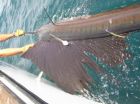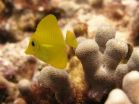(Press-News.org) Researchers have discovered evidence of a distinct group of "archaic" humans existing outside of Africa more than 30,000 years ago at a time when Neanderthals are thought to have dominated Europe and Asia. But genetic testing shows that members of this new group were not Neanderthals, and they interbred with the ancestors of some modern humans who are alive today.
The journal Nature reported the finding this week. The National Science Foundation's Behavioral and Cognitive Sciences Division partially funded the research.
An international team of scientists led by Svante Pääbo at the Max Planck Institute of Evolutionary Anthropology in Leipzig, Germany, used a combination of genetic data and dental analysis to identify a previously unknown population of early humans, whom the researchers call "Denisovans." The name was taken from Denisova Cave in southern Siberia where archaeologists from the Russian Academy of Sciences recovered a bone in 2008.
Genetic sequencing of DNA extracted from a finger bone of a 5-10-year-old girl from the cave revealed that she was neither Neanderthal nor a modern human, but shared an ancient origin with Neanderthals. The genetic analysis also showed she had a very different history since splitting from Neanderthals, the researchers concluded.
A tooth, also found in the Denisova Cave, complemented the genetic evidence. "The tooth is just amazing," said Bence Viola, a paleoanthropologist at the Max Planck Institute. "It allows us to connect the morphological and genetic information."
Analysis of the tooth revealed a shape that falls outside normal tooth variation typically seen in Neanderthals and modern humans, providing further evidence the Denisova hominins are an evolutionarily distinct group.
Another type of analysis reported by the study's authors showed Denisovans contributed 4-6 percent of their genetic material to the genomes of present-day New Guineans. "They are ancestors of people in Papua New Guinea but not of the great majority of people in Eurasia," said David Reich, a geneticist at Harvard Medical School in Boston, who led the research's population genetics analysis.
By comparing the genetic material of the Denisovans to diverse modern humans, the authors disclose a previously uncharacterized episode of gene flow between "archaic" and modern humans.
Until last year, the mainstream view in genetics was that modern humans inherited essentially their entire DNA makeup from Neanderthal-related individuals when they migrated from Africa 40,000-55,000 years ago. It was surmised they completely replaced the humans who migrated before them, including the Neanderthals whose ancestors likely made the pilgrimage hundreds of thousands of years earlier.
But sequencing and analysis of the Neanderthal genome earlier this year showed this was not the case. Neanderthals were not completely replaced, but instead contributed 1-4 percent of their genetic material to all modern non-Africans before dying out. The finding, based on Neanderthals discovered at Vindija Cave in Croatia, showed that modern humans outside of Africa are not all descended from a single out-of-Africa migration.
"We have now found evidence for a second gene flow event as well from a different source population and into a narrower set of modern human groups," said Reich."The first gene flow event appears to have been from a population closely related to the Neanderthals, while the second gene flow event was from a population much more closely related to Denisovans."
The new research suggests rather than being an irregular occurrence, intermixing between diverged human populations may have been common. "In combination with the Neanderthal genome sequence, the Denisovan genome suggests a complex picture of genetic interactions between our ancestors and different ancient hominin groups," said Pääbo, a founder of the field of ancient DNA.
Denisovans are likely to have been widespread across a broad swath of Eurasia, since Denisovans must have existed not just in Siberia, but also thousands of miles to the south along the path of modern humans migrating out of Africa on the way to New Guinea. However, far less is known about this population archaeologically or morphologically than about the Neandertals and modern humans who were their contemporaries in western Eurasian and in Africa.
"We hope that these results will spur archaeologists and paleontologists to study sites occupied by Denisovans," said Reich. "All we have now is a finger bone, a tooth, and a genome. However, we now know that this population existed, and new archaeological discoveries should reveal much more about their morphology and material culture."
"Technically, the discovery and definition of this new population based on its DNA patterns--rather than morphology--is also fascinating," said Reich. Traditionally, hominin populations are defined based on studies of their physical form and structure. Defining them based on DNA is something made possible only by recent advances in DNA technology, and may be a harbinger for the future.
###This study also involved contributions from researchers at the Broad Institute of Harvard and Massachusetts Institute of Technology; the University of California at Santa Cruz and Berkeley; the University of Tübingen, Germany; Emory University, Georgia; the University of Montana; the University of Washington; the Institute of Evolutionary Biology, Barcelona, Spain; the Institute of Vertebrate Paleontology and Paleoanthropology of the Chinese Academy of Sciences, Beijing, China; the University of British Columbia, Vancouver, Canada; and the Institute of Archaeology & Ethnography, Russian Academy of Sciences, Siberian Branch, Novosibirsk, Russia.
END
Billfish and tuna, important commercial and recreational fish species, may be more vulnerable to fishing pressure because of shrinking habitat, according to a new study published by scientists from NOAA, The Billfish Foundation, and University of Miami Rosenstiel School of Marine and Atmospheric Science.
An expanding zone of low oxygen, known as a hypoxic zone, in the Atlantic Ocean is encroaching upon these species' preferred oxygen-abundant habitat, forcing them into shallower waters where they are more likely to be caught.
During the study, published recently in ...
MADISON – To survive in a tumultuous environment, sea urchins literally eat through stone, using their teeth to carve out nooks where the spiny creatures hide from predators and protect themselves from the crashing surf on the rocky shores and tide pools where they live.
The rock-boring behavior is astonishing, scientists agree, but what is truly remarkable is that, despite constant grinding and scraping on stone, urchin teeth never, ever get dull. The secret of their ever-sharp qualities has puzzled scientists for decades, but now a new report by scientists from the ...
CORVALLIS, Ore. – Marine ecologists at Oregon State University have shown for the first time that tiny fish larvae can drift with ocean currents and "re-seed" fish stocks significant distances away – more than 100 miles in a new study from Hawaii.
The findings add credibility to what scientists have believed for some time, but until now been unable to directly document. The study also provides a significant demonstration of the ability of marine reserves to rebuild fishery stocks in areas outside the reserves.
The research was published this week in PLoS One, a scientific ...
Researchers at the University of Minnesota have discovered how HIV binds to and destroys a specific human antiviral protein called APOBEC3F. The results suggest that a simple chemical change can convert APOBEC3F to a more effective antiviral agent and that shielding of a common feature shared by related proteins may yield a similar outcome.
This discovery highlights the potential for a novel approach to combating HIV/AIDS that would seek to stabilize and harness the innate antiviral activity of certain human proteins, according to lead author John Albin, a researcher ...
BUFFALO, NY (December 22, 2010) -- Experiments by a team of researchers in New York and New Jersey have generated evidence that questions the common belief that the pterygotid eurypterids ("sea scorpions") were high-level predators in the Paleozoic oceans. This group, which ranged the seas from about 470 to 370 million years ago (long before the dinosaurs appeared), included the largest and, arguably, scariest-looking arthropods known to have evolved on planet Earth. Reaching lengths of 2 ½ meters with a body supported by well-developed legs, and armed with a pair of forward-facing ...
In a breakthrough that could lead to new treatments for patients with malignant melanoma, researchers from Mount Sinai School of Medicine have discovered that a particular protein suppresses the progression of melanoma through regulation of an oncogene, or gene responsible for cancer growth. The study is published in the December 23 issue of Nature.
Researchers studied the natural progression of melanoma using mouse and human cells, as well as patient samples and determined that the presence of a specific histone variant, which is a protein that helps package DNA, was ...
A protein implicated in the development of vascular diseases may also contribute to the failure of arteriovenous (AV) fistulas created for vascular access in dialysis patients, according to a study appearing in an upcoming issue of the Journal of the American Society of Nephrology (JASN).
"Our findings raise the possibility that monocyte chemoattractant protein-1 (MCP-1) may contribute to the relatively poor outcomes regarding the function and longevity of human hemodialysis AV fistulas," comments Karl A. Nath, MB.ChB (Mayo Clinic, Rochester, MN).
AV fistulas are the ...
BIRMINGHAM, Ala. – Eating a Southern staple, fried fish, could be one reason people in Alabama and across the "stroke belt" states are more likely than other Americans to die of a stroke, according to a study published in the December 22, 2010, online issue of Neurology, the medical journal of the American Academy of Neurology (AAN).
In the stroke belt states – Alabama, Arkansas, Georgia, Louisiana, Mississippi, North Carolina, South Carolina and Tennessee – the risk of dying from stroke is higher than in other parts of the country. In Alabama, the stroke death rate ...
HOUSTON — People with higher levels of folate in their red blood cells were more likely to have two tumor-suppressing genes shut down by methylation, a chemical off switch for genes, researchers report in the December issue of Cancer Prevention Research.
DNA hypermethylation, notes co-author Jean-Pierre Issa, M.D., professor in MD Anderson's Department of Leukemia, is found in a variety of cancers and diseases of aging, such as heart disease. Methyl groups attach to genes at sites called CpG islands and protrude like tags or book marks from the promoter region, preventing ...
Tampa, Fla. (Dec. 23, 2010) – Two studies appearing in the current issue
of Cell Transplantation 19(10) discuss stem cells derived from adipose (fat) cells and their potential use in plastic surgery and tissue reconstruction. The studies are now freely available on-line at http://www.ingentaconnect.com/content/cog/ct/ .
Adipose-derived stem cells maintain their "stemness" and could be useful for cell-based therapies
A team of researchers from several institutions in Italy isolated and characterized adult fat cell-derived stem cells from patients undergoing lipoaspiration ...

